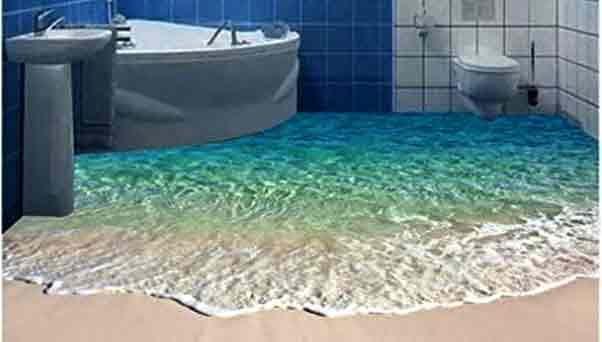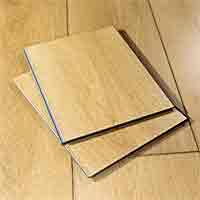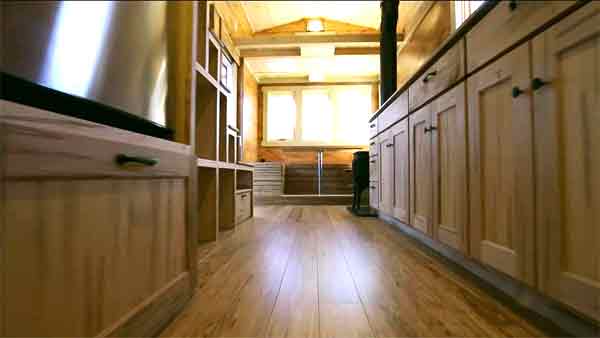Flooring Choices For Your Tiny Home, RV, or Travel Trailer
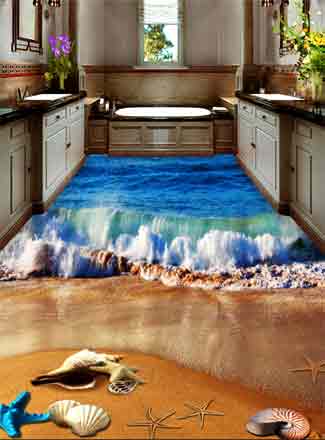
There are many flooring choices for your tiny home, RV, or travel trailer, but none more fun than floor murals. I would so do this in my tiny house bathroom. The floor mural above is available from Amazon here. This one is 78 3/4″ square, self adhesive vinyl. There are literally hundreds of images to choose from, some as low as $30.00 but I don’t expect them to last long. I mostly have it on the page just because I think it’s cool
Here’s another tropical beach scene from Etsy. Imagine walking into this bathroom for the first time. ETSY also has a huge selection of floor murals. They can be ordered in regular vinyl or heavy duty vinyl, which they guarantee will last five years. You can order in various sizes to fit the room.
If you want to do a tiny house bathroom, the same picture can be ordered in a smaller size.
One More, Just For Fun
Imagine your guests walking into a room with flooring like this. They might not make it to the toilet before losing it. Oh, now imagine them finding it in the middle of the night!
Made of heavy duty vinyl, about the same size as the one on the right is available from Etsy.
OK, let’s get serious
Laying flooring in a tiny home is way easier than “replacing” flooring in an RV. The products are the same, but in an RV you need to remove sofas, beds, bench seat, and then the old flooring. It’s a difficult job. Expect two hard days of work just for that.
Flooring Choices For Your Tiny Home, RV, or Travel Trailer (for real)
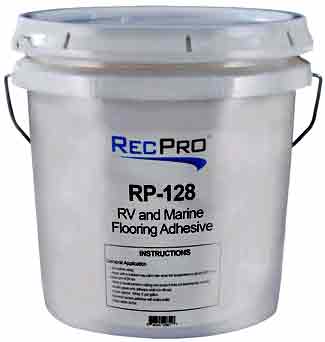
Vinyl, sometime known as linoleum, is actually a good choice for tiny house and RV flooring. It can be purchased from The Home Depot or any building material center. Just use enough adhesive so it doesn’t come loose from jarring or temperature changes.
SPC vinyl flooring is great in areas where temperatures swing wildly. It’s fine from -30°f to +155°f and it adjusts to changes quickly. If you’re installing radiant heat, vinyl flooring is a great choice.
Using the right adhesive is also important. This RecPro RP-128 RV and Marine Flooring Adhesive will stand up to anything. You need to apply it when the temperature is between 65° – 75°f, but once it dries it’s forever. It’s waterproof and easy to spread. One gallon covers about 100 sq./ft. Order direct fro RecPro for cheaper price than Amazon, free shipping*, and 5% off when you use this coupon code: TINYLIFE.
Vinyl Plank Flooring is the Best Flooring Choice for your Tiny Home, RV, or Travel Trailer
Vinyl plank flooring is easier to install then huge sheets of vinyl 102″ wide. The Home Depot has a great selection.Vinyl plank flooring can look like wood, stone, ceramic tiles, even metal. Here are some details to know:
There are two kinds of vinyl plank flooring
SPC (Stone Polymer Composite) is temperature stable. It’s best for RVs and travel trailers that experience huge temperature swings while being stored. Sometimes known as “rigid core,” it’s super durable and waterproof. Won’t dent under heavy furniture. Can feel cold.
WPC (Wood Polymer Composite) is fine for a temperature stable environment but not suitable for RVs or travel trailers. This product can swell up in high humidity environments. Feels slightly flexible underfoot. Retains warmth.
Vinyl Plank Flooring Thickness
Vinyl flooring is made of several layers. The thickness of the top layer will determine how sturdy and resistant to scuffs and scratches it is. A thicker plank will not show the imperfections of the subfloor.
LVP (Luxury Vinyl Planks) are typically higher quality, with a thicker and more rigid wear layer. There isn’t an industry defined standard that makes a plank “luxury” however.
Always choose a product that is for “high traffic” areas. In a tiny house or RV, all areas are high traffic.
Wood-look vinyl planks can look just like laminate planks.
Vinyl Plank Flooring comes in different versions
Peel-N-Stick Bonding Primer
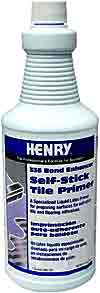
Lowest quality. Easy to put down and will stay down if you use enough of the right primer on the subfloor. Use the self-stick tile primer shown here and don’t skimp. Used to enhance the bond of residential self-stick tile and flooring adhesives to the subfloor. Use on porous soft wood floors (not for use on particle board). I did the bathroom with this and is was fine.
Since everybody asks about getting peel-n-stick tile to stay down, I know they’re having issues. The surface the tile will be sticking to needs to be clean and dry, free of films like wax, but it also needs to be very smooth and not majorly porous. Eventually the imperfections of the subfloor with migrate through the tile and show up. The glue will settle into cracks and holes and let loose of the tile. So, surface prep is really important.
Henry 336 1Gal. Bond Enhancer helps improve the adhesion on dry, dusty, and porous substrates. The primer can be used on gypsum cement underlayments, as well as to prime soft wood floors, including plywood.
Glue-down
A bit more involved installation process, but they will stay down. This is perfect for travel trailers or movable tiny homes that experience a lot of vibrations and bouncing from being towed. It also good for slide-outs that don’t have two permanent walls to keep it in place.
Floating and Interlocking
These vinyl planks are not stuck to the subfloor- they use the walls to keep them in place. They can be bounced out of place, so some even come with seam tape to keep them together. These would not stay in place on a slide-out. An underlayment is recommended.
Vinyl Underlayment
In a tiny home that has a plywood subfloor, an underlayment is not absolutely necessary. In a home, it’s mostly used for sound dampening. You’d also need it as a moisture barrier on basement concrete. It can make your floor a little softer and give it a bit more insulation.
Cork underlayment is a great choice because it is a natural product and won’t stain vinyl.
Some vinyl plank flooring has an underlayment already built-in. Because we’re installing in a moveable structure like a tiny home, RV, or travel trailer, gluing the vinyl planks directly to the subfloor is best.
Other Types of Flooring People Have Used
Eco-Friendly Bamboo Flooring
Cali Bamboo offers a great selection of Eco-Friendly flooring options like Bamboo and EUCALYPTUS.
Transform your tiny home or RV with the World’s Hardest Floors™. Not all bamboo flooring is created equal. Cali Bamboo flooring undergoes their proprietary Fossilized® manufacturing process that makes it twice the density of any other hardwood floor in the world, backed by a 50-year warranty.
Preferred by contractors, builders, and DIY homeowners, Cali Bamboo is ultra-low VOC, the perfect union of sustainability and durability to last a lifetime.
What happens when you combine Cali Bamboo’s Fossilized® manufacturing process with eucalyptus flooring? Stunning wood grains similar to traditional hardwoods, but with significantly superior durability, plus all the eco benefits of a rapidly renewable material.
Cali Bamboo has many other Eco-Friendly flooring option like wood, cork, and vinyl. Cali Bamboo is a great source for the most durable flooring for your tiny house.
Cali Bamboo also offer bamboo plywood and veneers. They even have bamboo fencing and rugs. 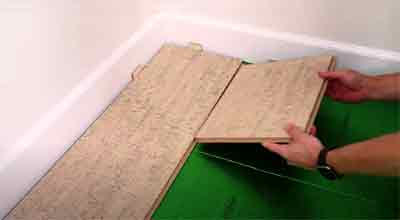
Renewable Cork Flooring
Cork flooring promises quieter, more comfortable rooms that keep your joints, your home, and your planet happy. Cork is naturally renewable, and simply trimmed from the bark of the cork oak tree which then regenerates. Planks in this collection are topped with a high resistance finish, making them easier to clean and better protected from scratches. The cork material in both the top beauty layer and bottom underlayment of these planks is also naturally water resistant, sound insulating, antimicrobial, and temperature regulating.
Laminates
Laminate flooring is very similar to Vinyl laminate flooring, except that the core of vinyl is a waterproof vinyl (plastic) and the core of a laminate is basically glued sawdust (high density fiberboard). They look the same. Laminate planks are rigid. These costs more than vinyl, and unless you pay for great quality they can be susceptible to water and moisture swelling.
Stone Coat Epoxy Flooring
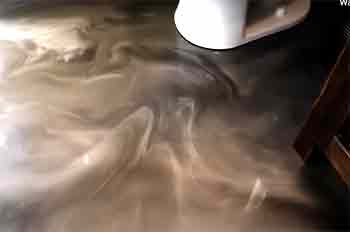
I’m a fan of epoxy countertops. Epoxy can also be used as flooring but you kinda need to have an artsy side. With a multitude of pigments and colors, you can make floors that look like granite, jade, marble, quartz, metal, and more. “Epoxy is tough! It’s scratch resistant, stain resistant, UV resistant, heat resistant, and impact resistant. That’s a lot of resistance! Plus, it’s sturdy enough to handle the normal wear and tear of household living while maintaining its incredible looks.”
See more about Stone Coat Countertops on this page of Tiny Life Consulting website.
There are other epoxy brands you can use, but Stone Coat Countertops has by far the best instructional videos.
Hardwood Flooring

Hardwood flooring has been all the rage. But it’s very expensive, hard to install properly, not waterproof, and scratches easily. At $5.00*/ft. a 300 sq./ft. tiny house will cost $1,500.00* just for the material.
Special tools will be needed to nail the hardwood pieces tightly down. Eventually the nails will loosen, then the floor squeaks when you walk on it. You’ll need to put down a moisture barrier first.
My hardwood floors were damaged when the water line to the ice maker in the refrigerator leaked. The individual boards swelled and cupped.
Shou sugi ban
Shou sugi ban is the ancient Japanese technique for preserving wood by burning the top layer. I’m mentioning it because I know one guy who did this to the plywood subfloor, scraped of the burned char with a wire bush, and applied several coats of Varathane, and called it good. It was OK.
This method is currently popular among DIY tiny house builders because it’s inexpensive and easy to do. It’s usually applied to exterior siding and decks. A natural oil finish is applied as the final coat.
The torch used for the burning process is shown in the widget section on this page.
Carpet
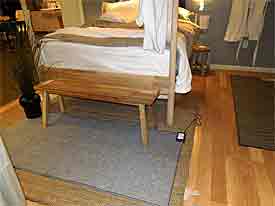
Carpet is fine, but because a tiny house floor is always a high traffic area it will wear out a lot faster than a vinyl laminate. RecPro sells an extreme duty carpet that is often used in boats. See the widget section of this page for the link.
Throw rugs over a laminate flooring would be a better solution than carpet. Slip an electric floor heater under the rug to keep your toes toasty on cold winter nights. Use a natural fiber throw rug to avoid off-gassing.
Penny Floors
There are 304 pennies needed for one sq./ft. 5000 pennies, enough for 16 sq./ft. weighs about 27 pounds. Each penny needs to be glued down well. It requires an epoxy top coat. The pennies will eventually corrode under the epoxy.
Flooring Options To Avoid
Our motto for tiny house building is “Fight to save every ounce, every inch, and every watt.”
Tile Flooring
Tile is pretty but can heavy. The grout is also heavy. When dry, tiles are very brittle. In a moving structure like a tiny house, tiles will crack and pop loose. Even a stationary tiny house is prone to vibrations that a regular house isn’t. But we won’t leave you hanging. Visit this page to find ways of saving weight on tiny house tile.


